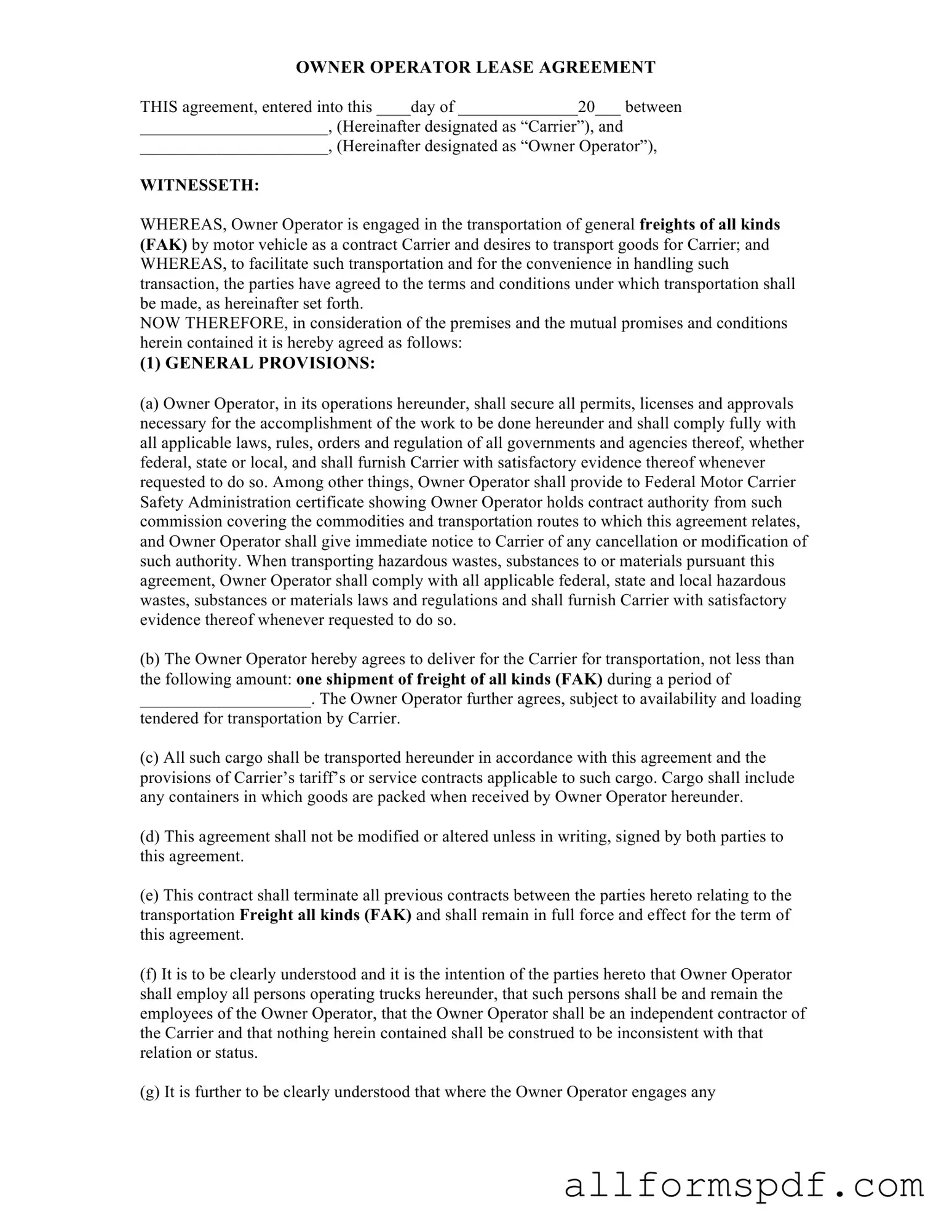Misconception 1: The Owner Operator Lease Agreement is a standard contract that applies to all owner operators.
This is not true. Each Owner Operator Lease Agreement can be tailored to the specific needs and circumstances of the parties involved. The terms can vary significantly based on the type of cargo, the routes, and the responsibilities assigned to each party.
Misconception 2: The Owner Operator is considered an employee of the Carrier.
In fact, the agreement explicitly states that the Owner Operator is an independent contractor. This means that the Owner Operator is responsible for their own employees and operations, and the Carrier does not assume liability for the Owner Operator's employees.
Misconception 3: The Owner Operator is not liable for damages or losses during transportation.
This is incorrect. The Owner Operator assumes full liability for any loss or damage to goods while in their care. They must ensure safe transportation and are responsible for any incidents that may occur during this process.
Misconception 4: Once signed, the Owner Operator Lease Agreement cannot be modified.
This is a misunderstanding. While the agreement does state that modifications must be in writing and signed by both parties, it is possible to amend the contract as needed. Flexibility exists, provided both parties agree to the changes in writing.
